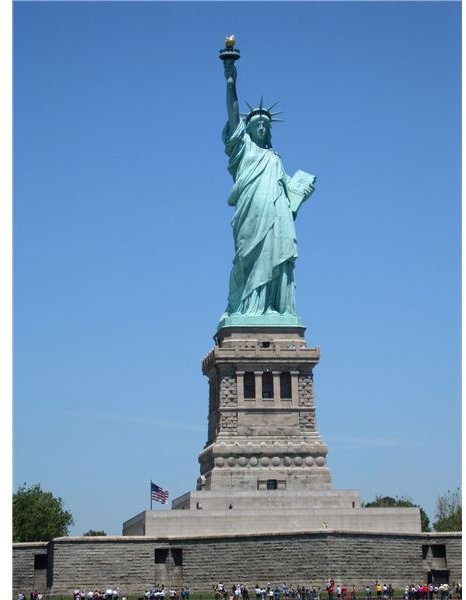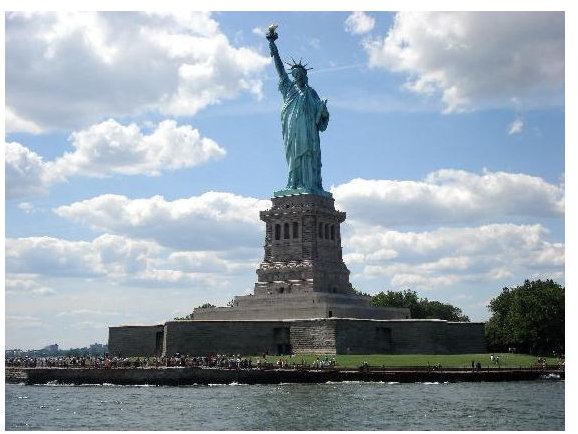Statue of Liberty Facts: History of the Statue of Liberty & Construction
Statue of Liberty
The Statue of Liberty or the “Liberty Enlightening the World” was built in 1875 as a gift for the Americans. The Statue of Liberty is deemed to be the largest nineteenth century concrete structure in the US. The article describes some of the most interesting Statue of Liberty Facts.
During the British invasion, the French had provided the American colonies with arms, ships, money and men for battling out the armies. Hundred years down the line, at the end of the American Civil War, several French intellectuals recognized the mutual admiration and respect that America and French shared for each other in terms of abolishment of slavery. Edouard Rene Lefebvre de Laboulaye, a scholar, addressed both America and France as ‘Two Sisters’ and believed in gifting the Americans a grand monument as a mark of human liberty. Frédéric-Auguste Bartholdi, a notable sculptor from Colmar, was also present at the same fuction and was completely motivated by the concept.
History of Statue of Liberty
The primary reason behind Frédéric Bartholdi’s motivation to build a strucutre was his personal vengeance towards slavery during the Franco-Prussian War, when he was a part of the French army. His dedication for building a massive structure grew stronger on his visit to Egypt where he was left mesmerized by the gigantic pyramids. Bartholdi then left for America to convince the government and the people before finalizing the spot of Bedloe’s Island, a government property. In 1875, the Third republic was formed and it was decided that the manufacturing of the structure would be partly funded by French (statue) and partly by Americans (foundation). Though the statue was to shedualed to be completed when the Americans celebrated their hundred years of Independence, the statue was ready only in 1884.

Construction
Bartholdi began with the construction process in association with Gaget, Gauthier & Company, a firm employing artisans who knew repoussé, a special method for building sculptural structures by hammering metal sheets inside the molds. Making structures using this method made it easier to transport the monument across the shores. The Statue of Liberty derived its theme from the goddess Libertas of Rome, who symbolized freedom. Alexandre-Gustave Eiffel, an engineer and designer, who had earlier worked on iron railroad bridges and the Eiffel Tower also contributed for making the intricate skeleton for the statue.
The arm of the statue which was thirty feet long was ready in 1876, followed by the completion of the lustrous copper head and shoulders. Later, the activity reached a standstill due to insufficient funds. In 1880, they began working on the iron framework of the Statue and completed the interiors and the exterior in three years duration. The mighty structure was then approximately hundred and fifty feet tall and weighed 450000 pounds.
In 1879, after the successful collection of the needed funds, the structure was finally completed in 1884. The Statue of Liberty was inaugurated in the same year by the then French Prime Minister. Joseph Pulitzer a noted journalist, also contributed heavily towards the accumulation of the funds through mass awareness amongst the people of France. However, Laboulaye didn’t live to witness this remarkable structure. Until the mid of 1885, the monument was placed in Paris for the tourists to visit.
In America

The structure was dismantled into three hundred and fifty individual pieces and packed in two hundred and fourteen crates for moving it to the Bedloe’s Island, United States, in a French frigate “Isere” on June 15, 1885. Later, Richard Morris Hunt designed the eighty nine foot high pedestal which was positioned on concrete foundation. The complete composition of the statue was released on October 28, 1886, which was declared a holiday during the presidency of Grover Cleveland. Pulitzer again raised funds but this time for the floodlight view of the Statue during the night.
Until 1899, the Statue of Liberty was the tallest and largest sculpture; however later it was overtaken by Saint Paul’s Building. The Statue of Liberty boasts of 354 steps to the Crown and 192 steps from the ground to the pedestal. The seven spikes of the crown depict the seven seas - Arctic, Antarctic, North & South Atlantic, North & South Pacific and Indian. The twenty-five windows of the crown signify the natural minerals of the earth. The Toga and Torch represent the Ancient Republic of Rome and Enlightenment respectively and the chains underfoot echo the defeat of slavery.
In October 1924, this piece of artistic work was declared to be a national monument in the United States. In 1956, the Bedloe’s Island was renamed as the Liberty Island. In 1984, the United Nations pronounced the Statue of Liberty to be a World Heritage Site. Celebrating its birthday on July 5, 1986, the monument was open to public after its restoration work to the public during Liberty Weekend. The Statue of Liberty stands as an ultimate example of great engineering skills and desinging abilities. The monument attracts thousands of people every year, including engineers and researcher who are in complete awe of the structure.
References
Image Credits
